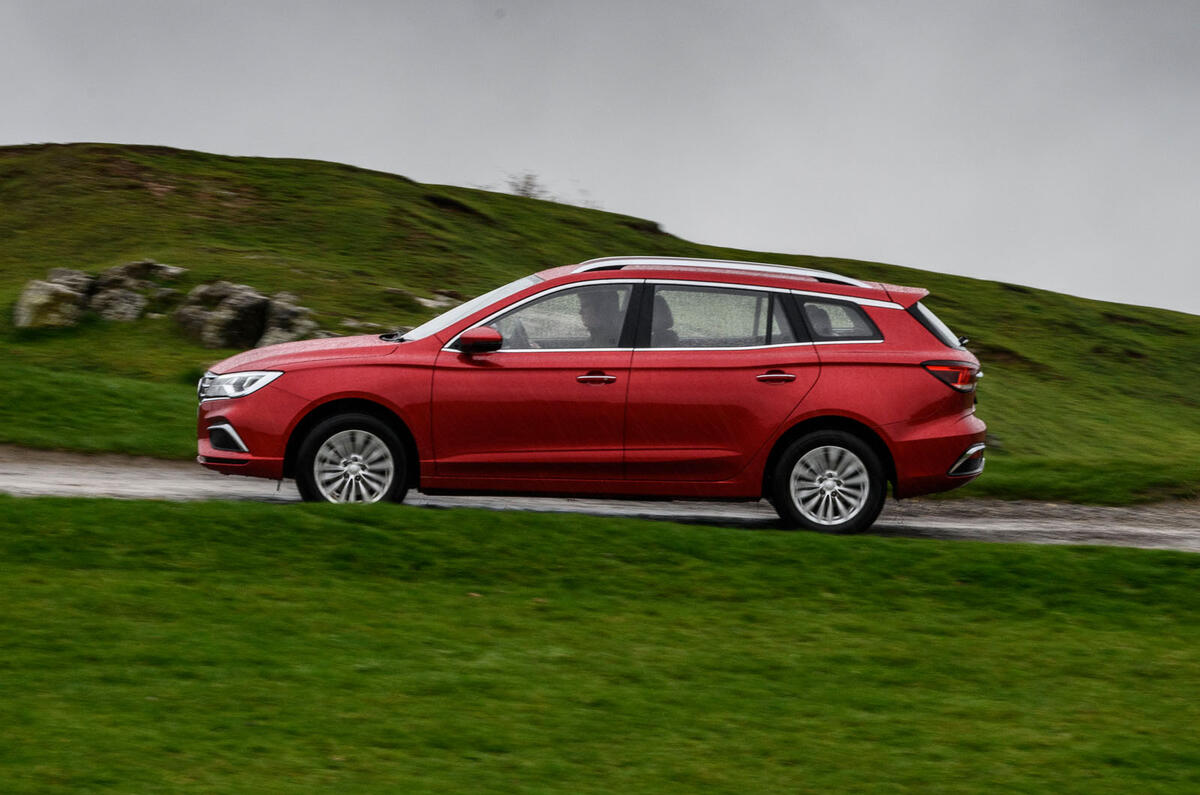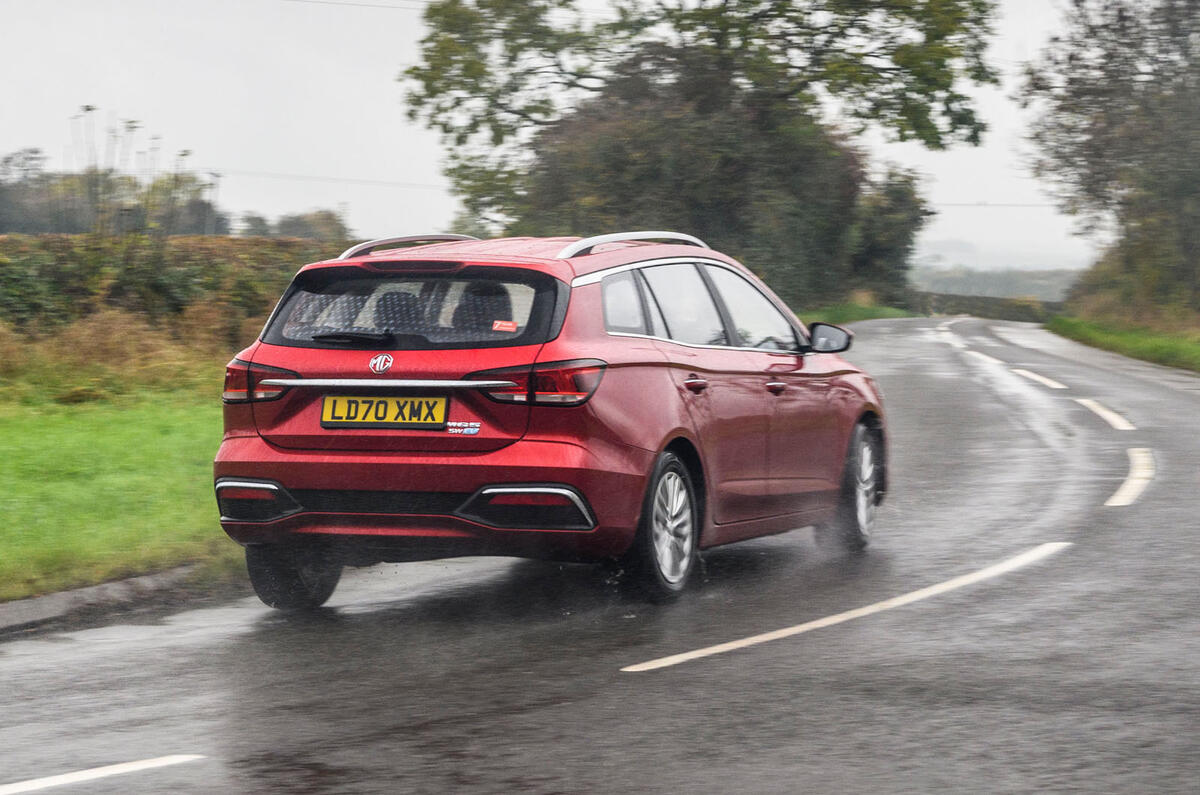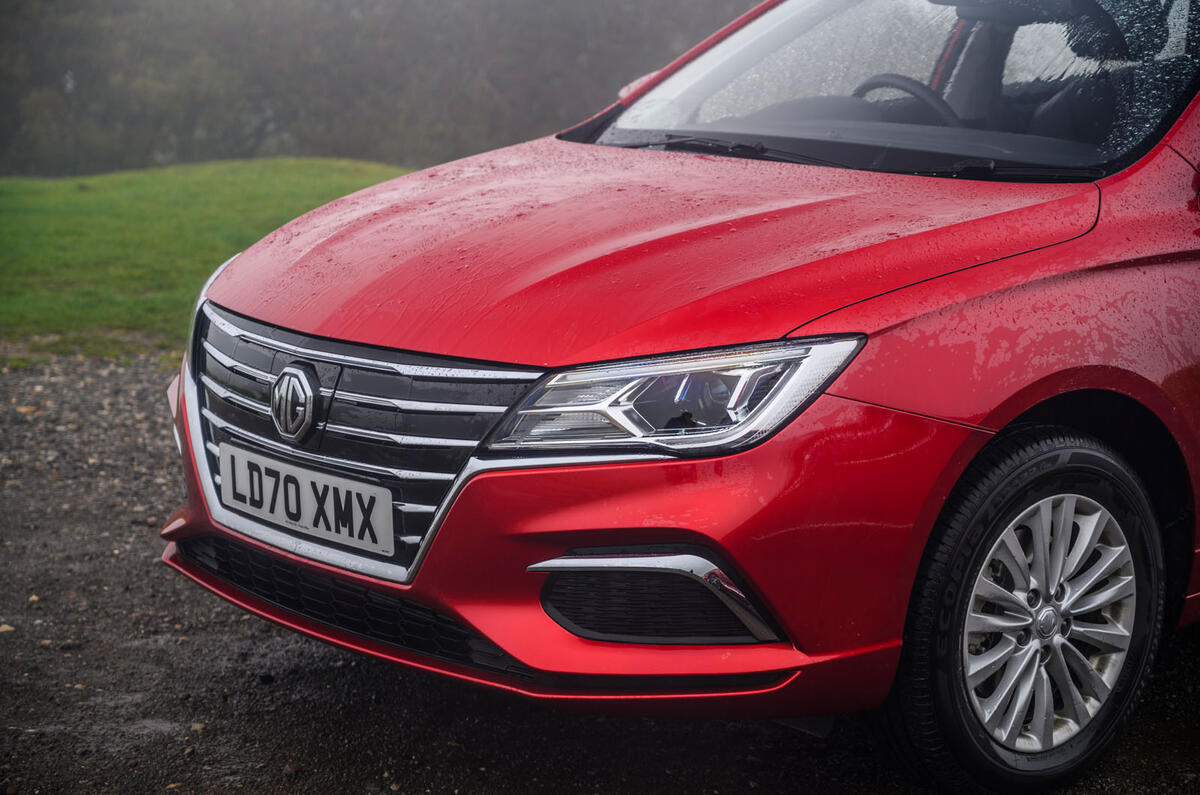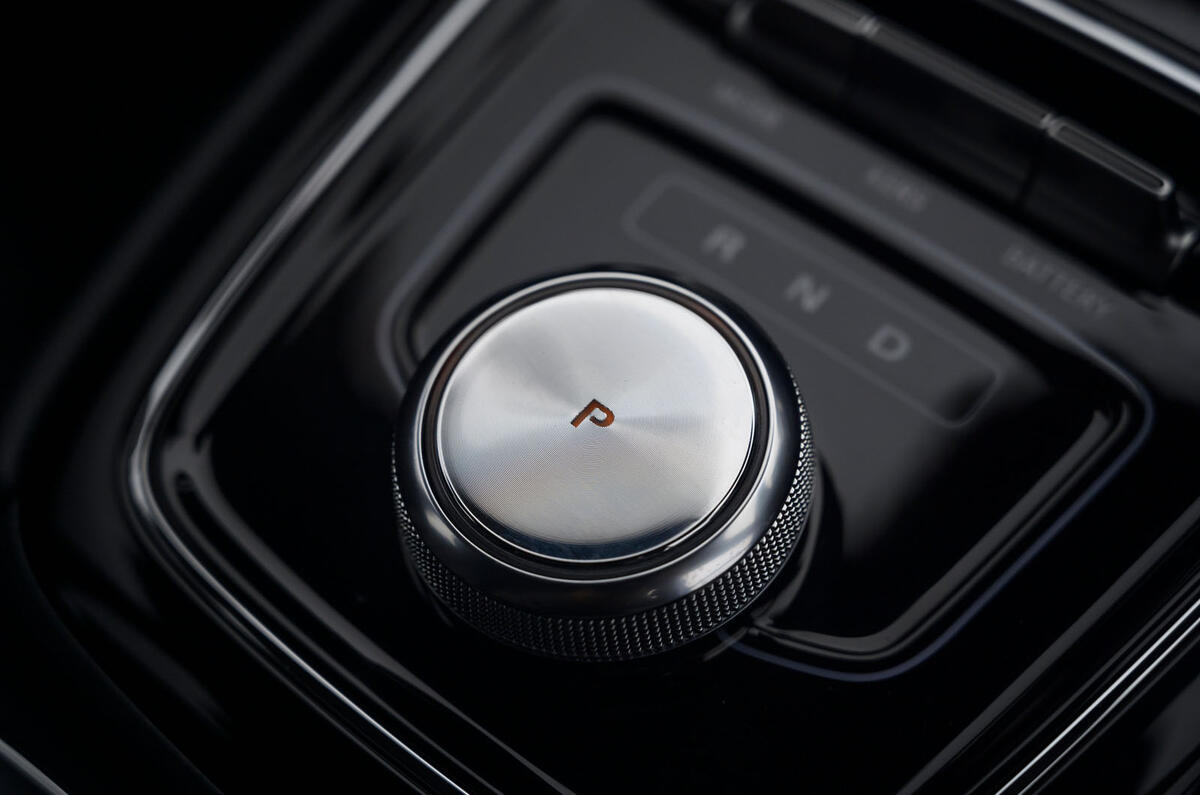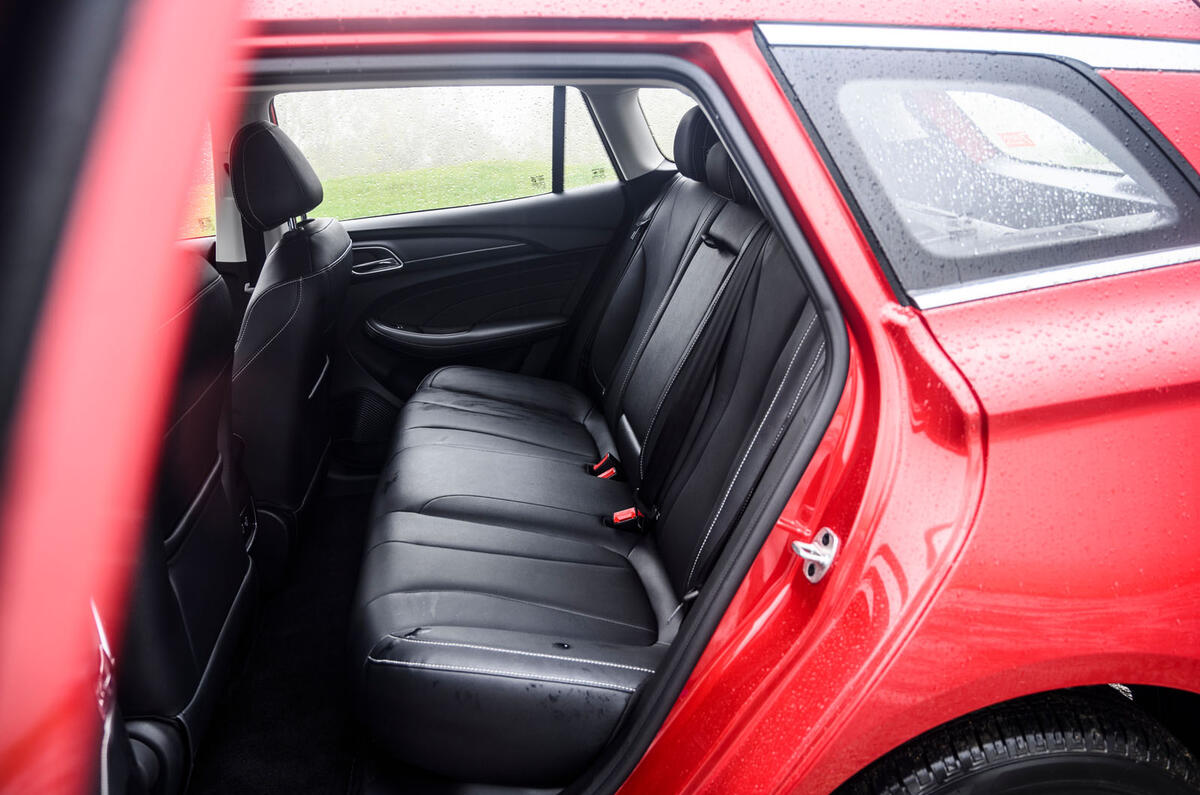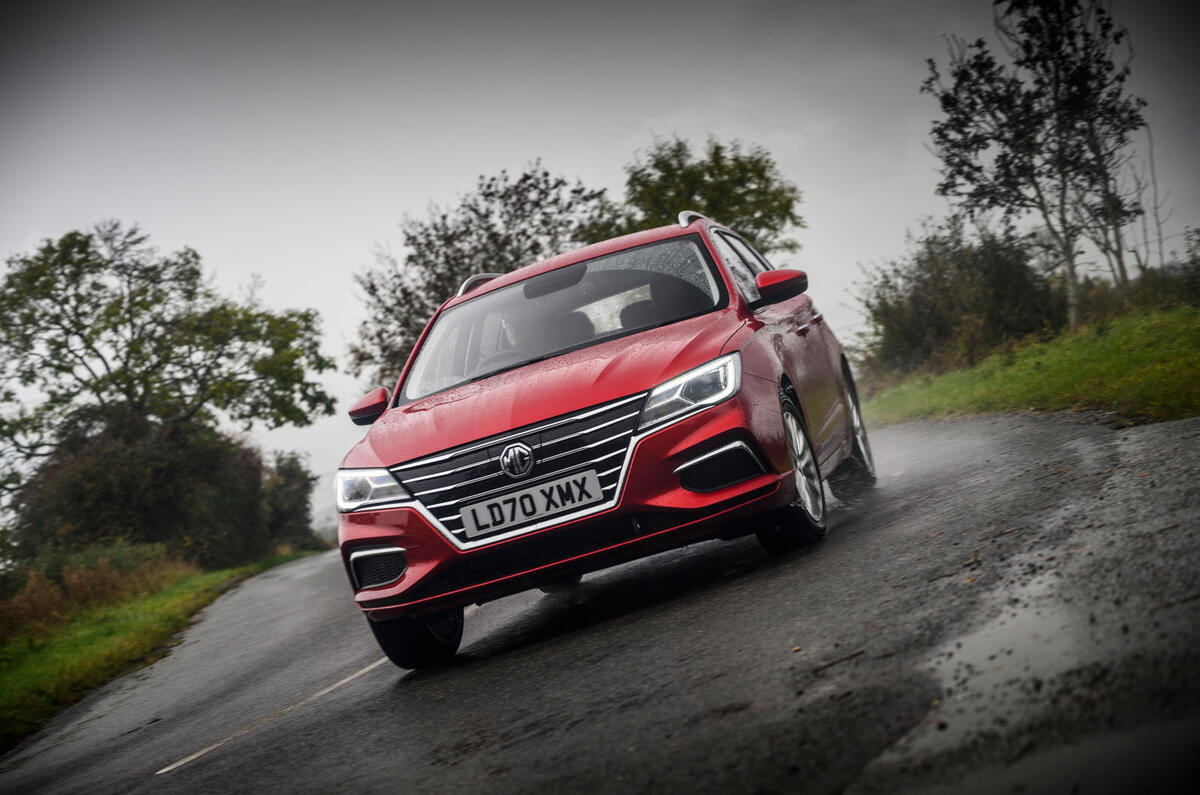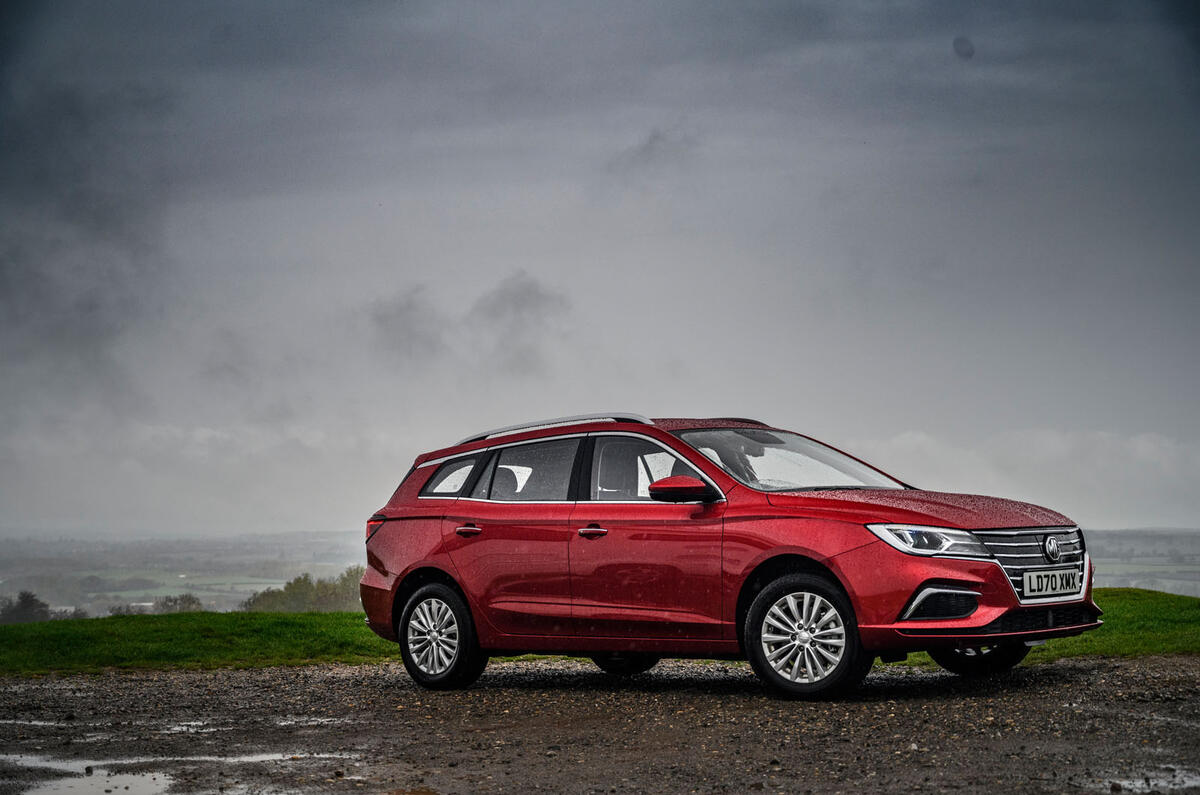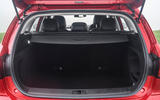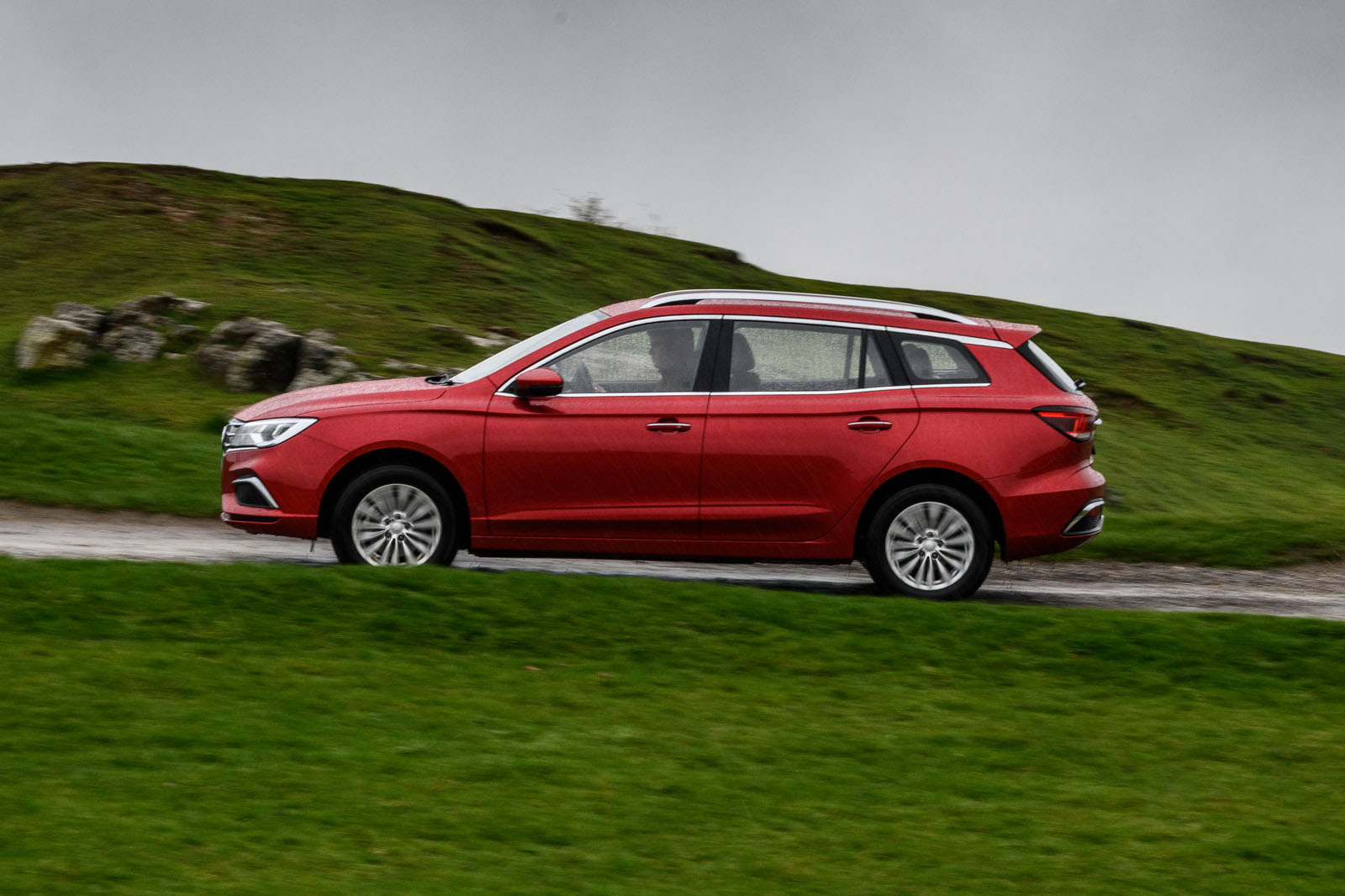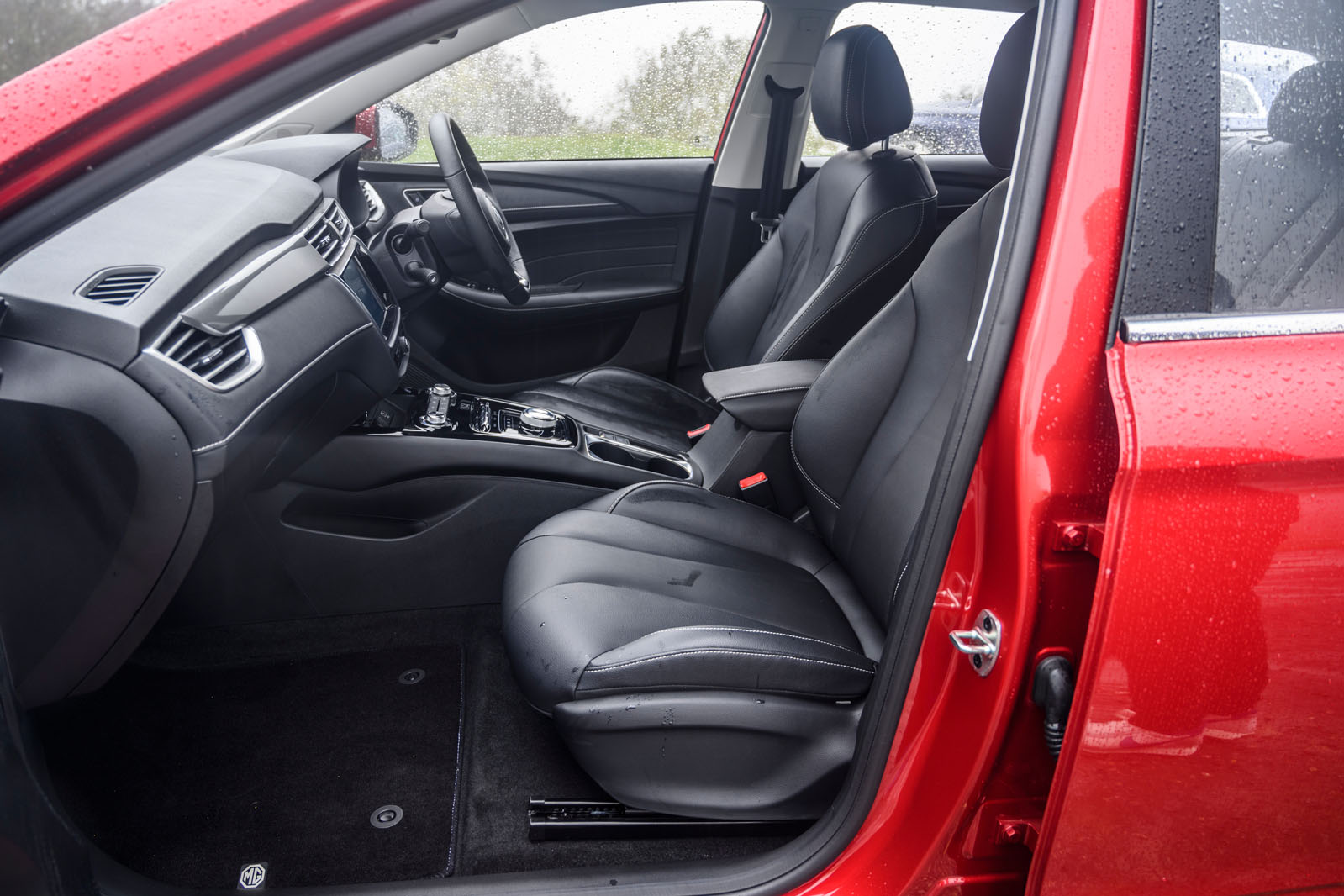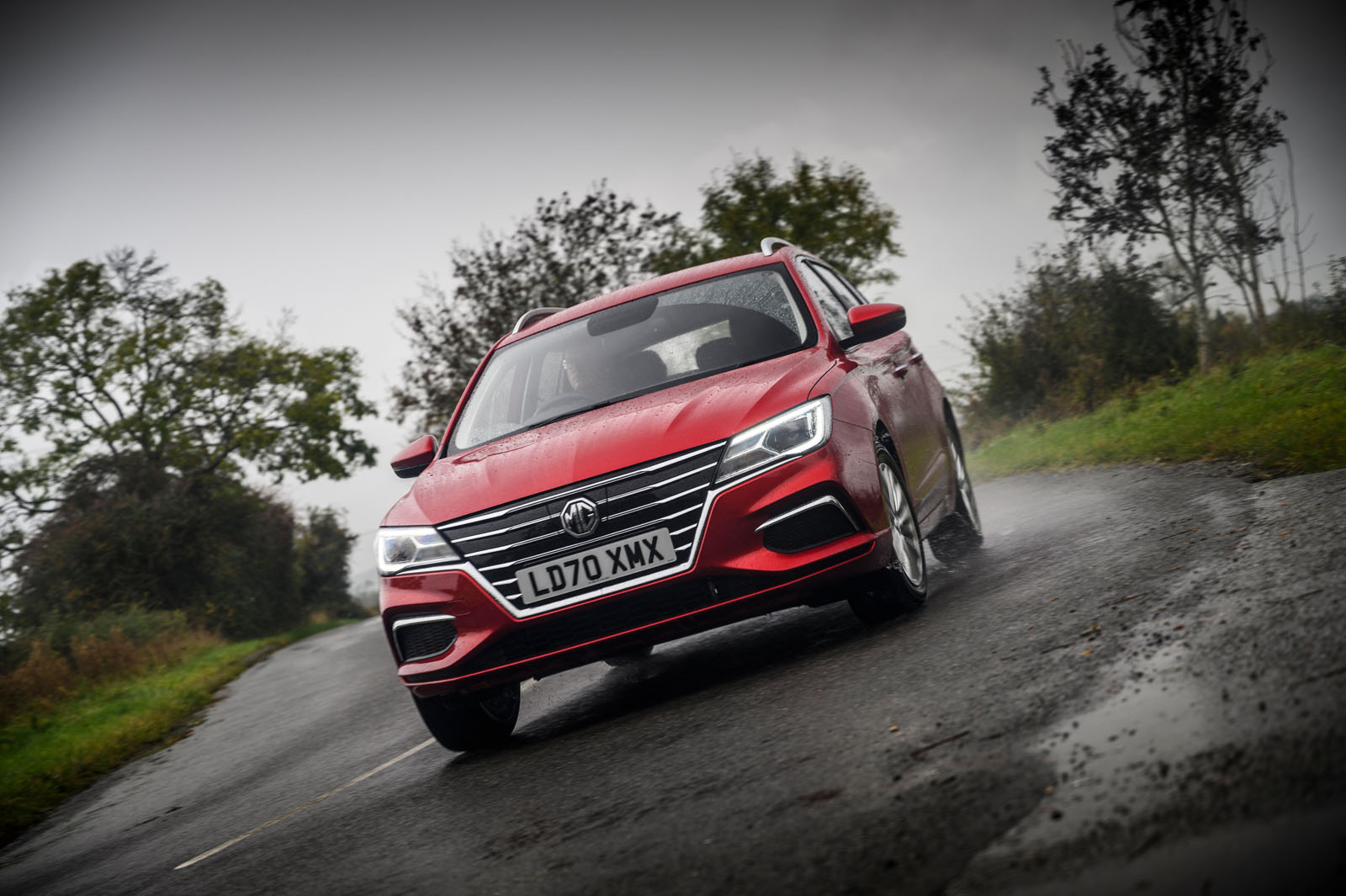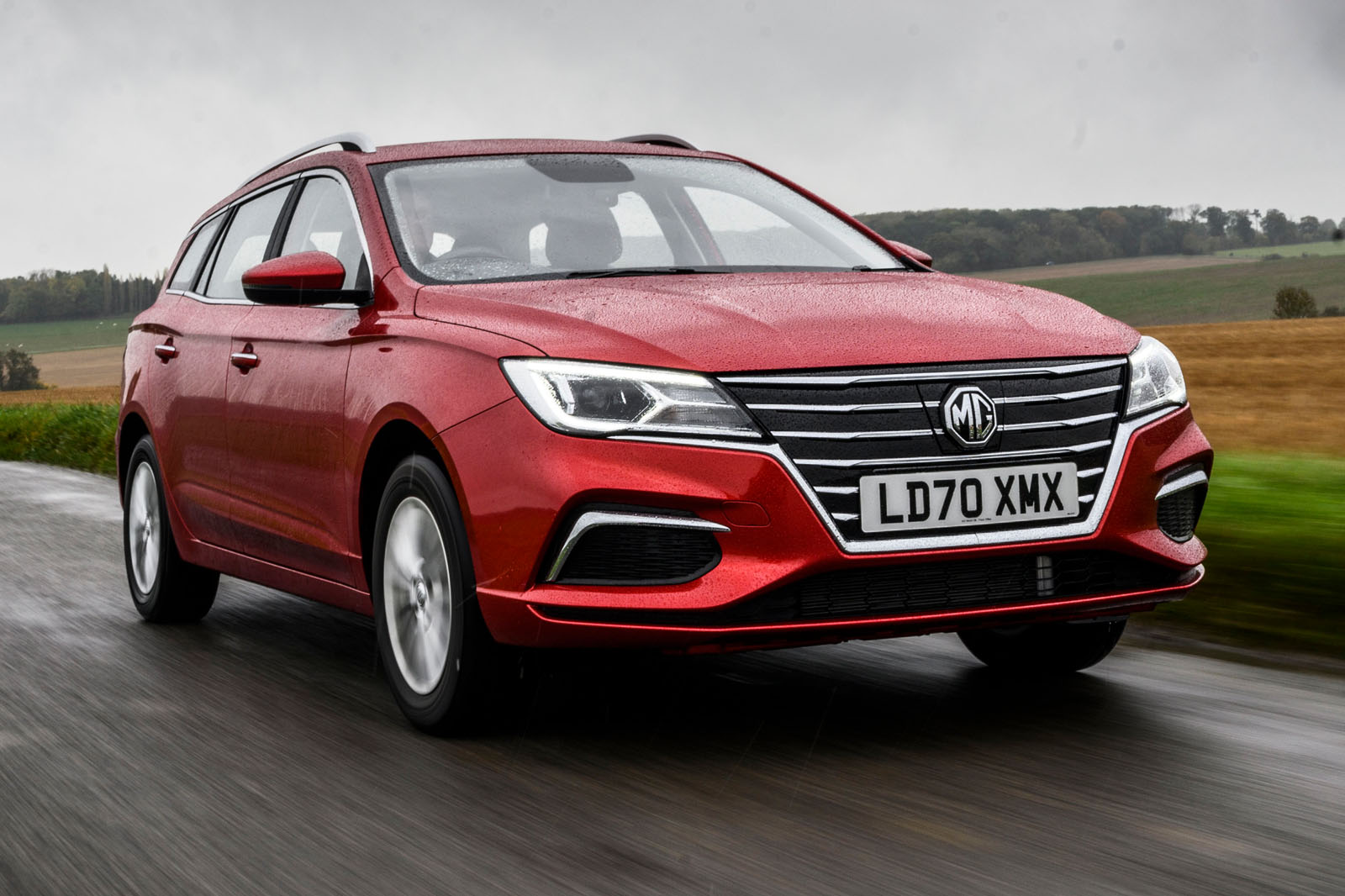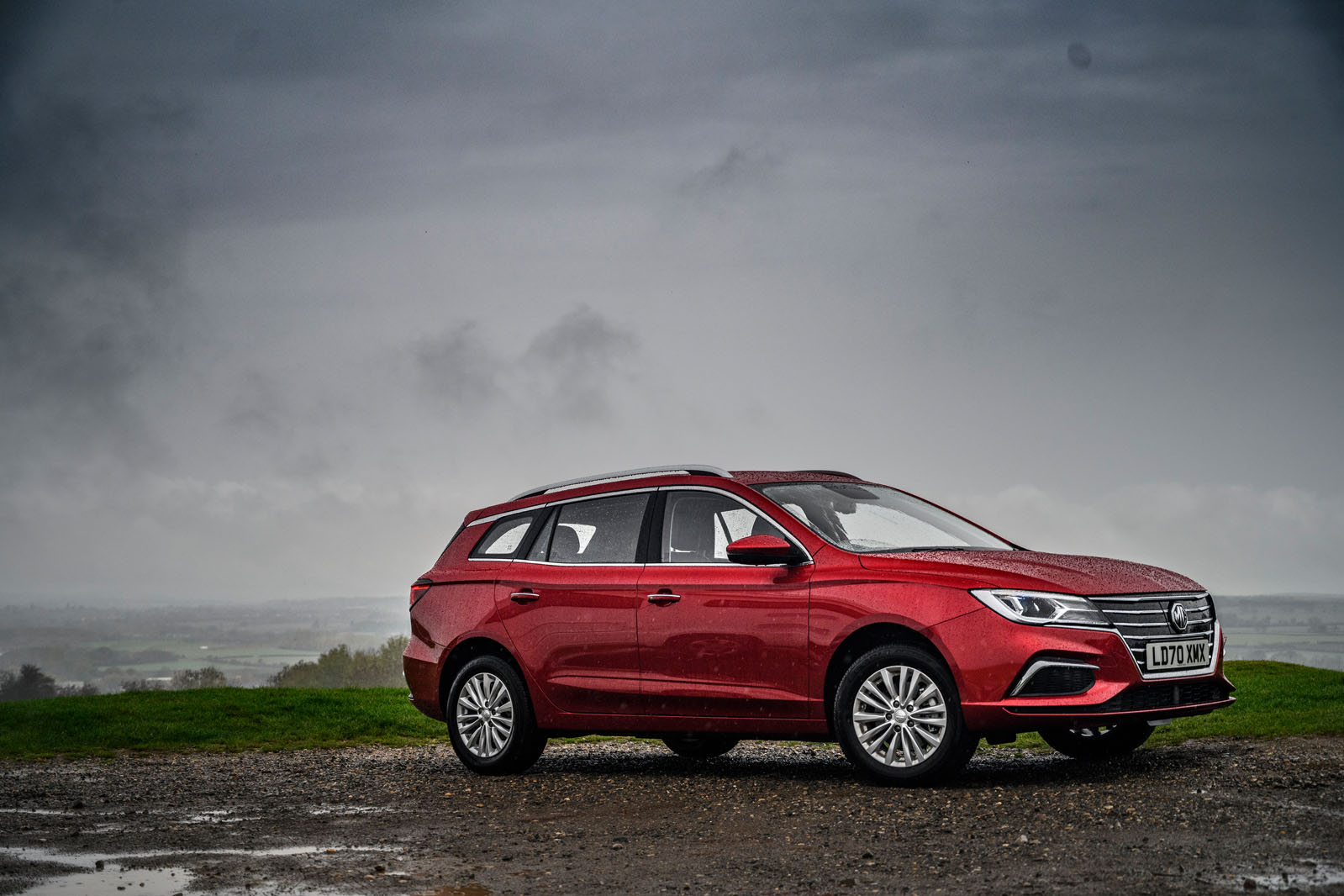There’s a clear air of cheapness about the resonant, undamped ping made by the MG 5 SW EV’s passenger doors as they close. The baseline material quality of the fairly hard plastic mouldings that you’ll find at lower levels of the cabin doesn’t pander much to the senses, either.
Still, our upper-trim-level test car wasn’t without the odd attempt at richness: it had leather-style seats and matching faux leather decorative trim on its dashboard and door panels and plenty of secondary controls done out in flashy chrome plastic. Given the choice, we’d rather embrace the car’s value and simplicity and buy the cheaper version shorn of some of those things, but owners might feel differently.
The driving position is higher than in a lot of modern hatchbacks, as is its ride height – both contributing to quite a lofty vantage point. The front seats are a bit flat and formless in the cushion, with a contour to the squab that wasn’t approved of by all testers, although adjustable lumbar support for the driver is present.
In the back, meanwhile, the clear sense of being perched up, and sat on top of the vehicle’s drive batteries as you so clearly are, makes head room a bit limited. It’s fine for children and growing teenagers but too tight for taller adults.
Instrumentation is laudably simple and clear. Analogue dials show you road speed, electric motor load and battery regeneration rate, while there are smaller inset digital grades for battery condition and temperature. The boot, which might well be another selling point for it in theory, is quite basic in its provisioning and a capacity of 464 litres under the load-bay cover is actually only 10% larger than a Nissan Leaf’s. But by loading it to the roof or collapsing the standard-fit 60/40 folding back seats, you would get better carrying versatility here than out of the Nissan.
The lack of a split-level floor arrangement that might provide both underfloor storage and a flat loading level is notable; likewise the absence of any load retention features. There is, however, room to put your own spare wheel into the car under the floor if you want to. (MG provides only mobility foam with the car.) Although there are a few notable blemishes on its scorecard, then, the idea that this car could make a practical, versatile compact family EV as well as a cheap one is just about delivered on.
Infotainment and sat-nav
The MG 5 gets the same 8.0in touchscreen infotainment set-up no matter which trim level you buy and it offers wired USB connectivity for up to four devices, a DAB radio, a rear parking camera and Bluetooth.
The only reason here to have the upper trim level is MG’s iGo factory navigation system. It would be a very tenuous reason, though, because it’s not nearly as sophisticated as the best fitted systems. Finding the map orientation and zoom level you prefer is either difficult or impossible. The mapping detail isn’t great, either, and navigation instructions aren’t delivered that clearly.
The good news is that wired smartphone mirroring for both Apple and Android handsets comes as standard and it seems to be integrated pretty reliably.
You get a six-speaker audio set-up in the car and the audio quality is more than passable.



